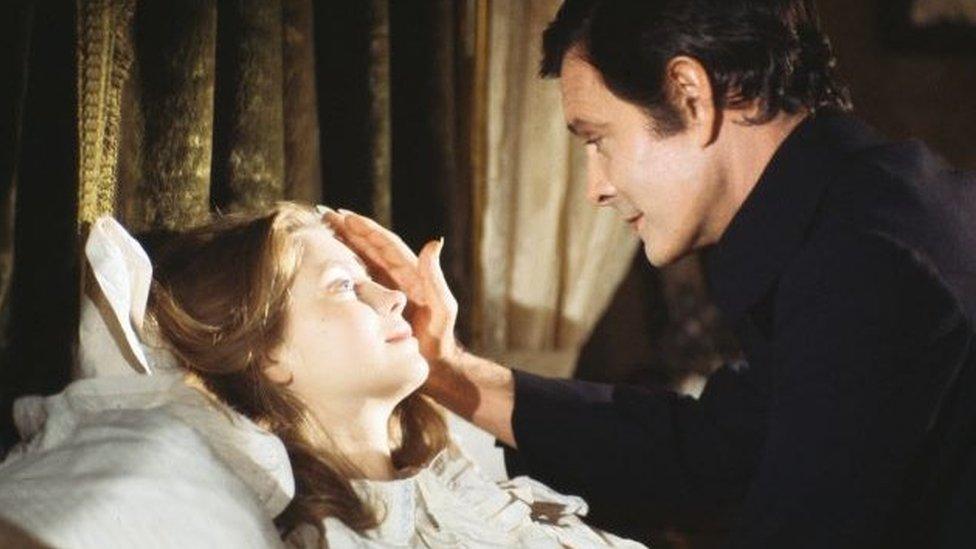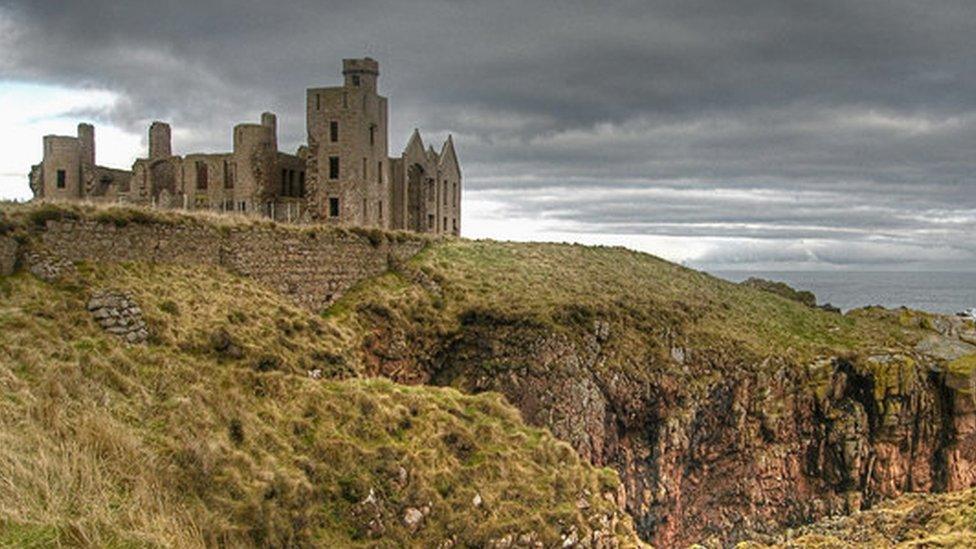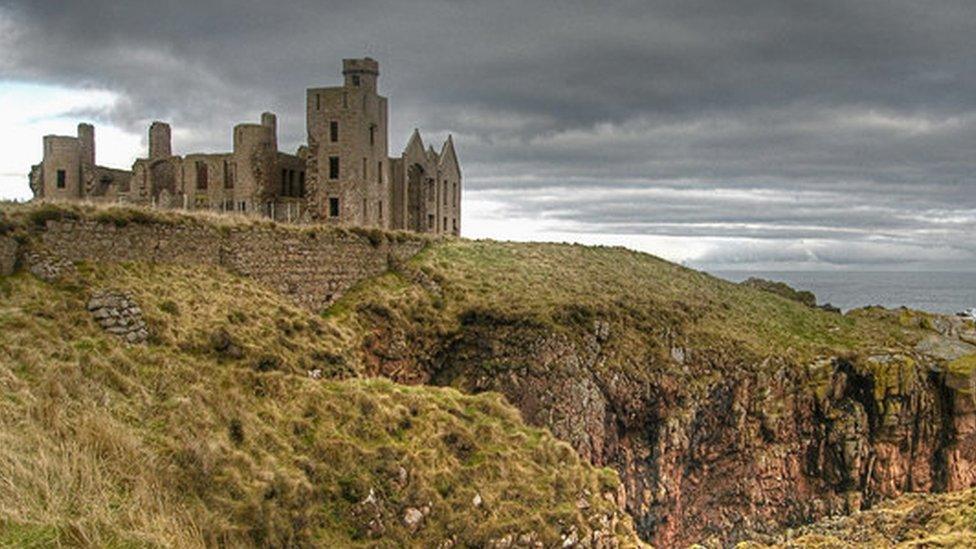Mystery of the Scottish woman who inspired Dracula
- Published

Louis Jourdan as Dracula in the 1977 film adaptation
The great-nephew of Dracula author Bram Stoker is visiting Scotland to research an almost-forgotten writer credited with inspiring the story.
Born near Jedburgh in 1849, Emily Gerard's fascination with vampires began after moving to Transylvania in the 1880s.
Dacre Stoker learned of Ms Gerard's influence from a rare interview his great uncle gave following the publication of Dracula, as well as the books Bram borrowed from the London Library during his research.
He is now being joined by researchers, including an academic from the University of Glasgow, to explore her writing and her legacy.
Dacre said: "Dracula is a cottage industry around the world, and Emily Gerard is due some of the credit for this."

Dacre Stoker is in Scotland to discover more about Emily Gerard
Although Dracula was not the first novel to be written about vampires, Bram Stoker's treatment of superstitions and myths lifted it above what had gone before.
The 1897 novel shaped how audiences would view vampires in the future with countless theatrical and film adaptations made in the decades that followed.
Bram wrote sections of Dracula during his summer holidays in the Aberdeenshire coastal village of Cruden Bay.
Nearby Slain Castle is credited with his inspiration for the count's castle.

Slain Castle is credited with his inspiration for the Dracula's castle
Dacre, an author and lecturer who has written both a prequel and a sequel to Dracula, believes Ms Gerard was behind much of the superstitions which featured in his great-uncle's book.
He said she was also responsible for the novel being set in Transylvania.
"Emily Gerard wrote an essay for the 19th Century magazine called Transylvanian Superstitions and followed it up with her book, Land Beyond the Forest.
"It gave my great-uncle a tremendous insight into the superstitions of vampires and the folklore involved with the undead - the nosferatu," he said.
"All of this, Bram got from Emily Gerard, and he was able to insert it into the book he was working on.
"She even helped him set the story in Transylvania, as he was originally setting it in Austria."

Christopher Lee in the film role of Dracula
Ms Gerard - the eldest daughter of Colonel Archibald Gerard and Euphemia Erskine - is believed to have been born at Chesters estate, outside Jedburgh, in 1849.
The family had moved to Lanarkshire during her childhood before relocating to Austria.
Along with her younger sister, Dorothea, she collaboratively wrote at least four published novels, while individually writing essays and reviews for several periodicals.
After her marriage to Polish cavalry officer Ritter Miecislaus von Laszowski in 1869, she continued to carve out a career as an essayist and novelist.
But it was when her husband was posted to Transylvania, in the early 1880s, that Emily's writing turned towards the myths and superstitions she encountered in and around the Carpathian mountain villages.
Dacre explained: "She is a bit of a mystery.
"I want to find out what gave her the courage and passion to explore, on her own, the superstitions and beliefs of the locals.
"These were delicate issues - pagan beliefs - that must have been difficult for her to investigate.
"I want to find out the roots of Emily Gerard here in Scotland that gave her the passion and courage to do what she did."
Over the coming months Dacre and other researchers hope to discover more about Emily Gerard while also raising her profile.
Gloria Anderson, who runs Experience Transylvania tours, said: "It is amazing how I recognize so much about Transylvania in Emily Gerard's writings, although it was almost 150 years ago when she wrote it all.
"Her language and approach are very modern - it almost feels like you are reading a modern travel blog from nowadays - and she had a great humour.
"It is interesting that so little is known about Emily, both in Scotland, and in Transylvania."
Emily Gerard died in Vienna, at the age of 55.
Related topics
- Published24 January 2020

- Published5 September 2022
- Published24 October 2018
